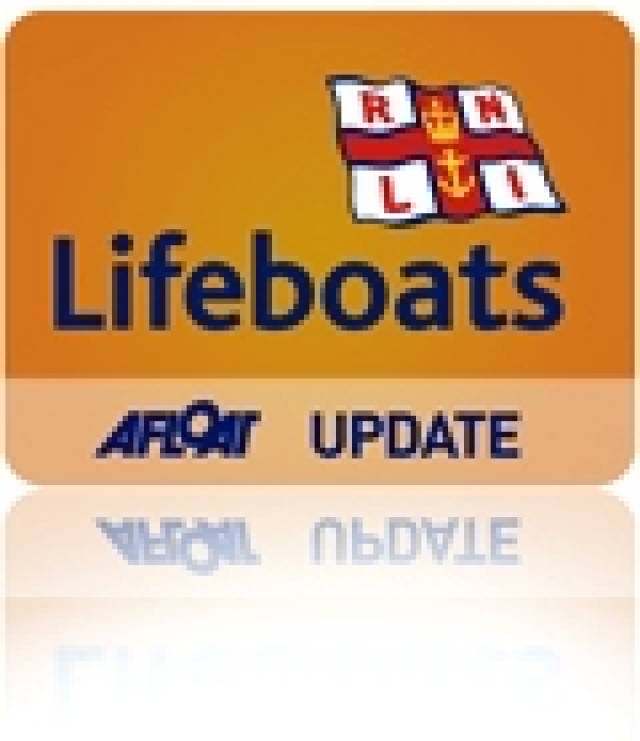There was a double celebration in Portaferry, county Down yesterday (Saturday 5 June 2010) as the RNLI held the official opening ceremony for their newly built lifeboat station and the naming and dedication of their Atlantic 85 inshore lifeboat Blue Peter V. Blue Peter presenter Andy Akinwolere made a special trip to the town to attend the ceremony and name the lifeboat.
The lifeboat station has been made possible by a legacy from Ms Elsie Sturgeon and through a local appeal. Elsie spent most of her life in Liverpool but retired to Killowen near Rostrevor. The stone clad structure has been designed to tie in with the surrounding buildings of the area and the copper roof has been modelled in the shape of an upturned boat. The total cost of the build is estimated to be around £750,000 and the building will house the lifeboat and its crew for generations to come.
Portaferry RNLI has had a Blue Peter lifeboat at the station since 1986. The previous Blue Peter V lifeboat was placed on service in 1994 and in that time was launched 328 times, rescuing 355 people. Its successor (also named Blue Peter V as Portaferry is the fifth lifeboat station in the RNLI to receive a Blue Peter lifeboat) has launched 19 times and rescued 17 people since its arrival on station last year. In recognition of this relationship, Blue Peter presenter Andy Akinwolere travelled to the town to specially name the £165,000 lifeboat, which has been funded through an appeal on the popular children’s TV programme.
The provision of the Blue Peter V lifeboat at Portaferry brings the number of Atlantic 85 lifeboats in Northern Ireland to three, with a fourth expected at Red Bay shortly.
It has a number of improvements on its predecessor including a faster top speed of 35 knots; radar; provision for a fourth crewmember and more space for survivors. It can operate safely in daylight in up to force 7 conditions and at night in up to force 6, it is also capable of being beached in an emergency.
Commenting on the his role in the ceremony Blue Peter presenter Andy Akinwolere said, “ I am delighted to be in Portaferry representing Blue Peter and the many children who supported our appeals for RNLI lifeboats. We have had a long and successful relationship with the charity and it is a wonderful to know that lifeboats bearing the name Blue Peter have been launched so many times to save lives at sea.”
Brian Bailie, Portaferry RNLI Lifeboat Operations Manager, who accepted the lifeboat station and the new Atlantic 85 lifeboat into the care of Portaferry RNLI added, “We have looked forward to this event for a long time. We are very grateful to the many people who have made it possible through their generosity. The volunteer lifeboat crew in Portaferry provide an exceptional service to their community and we are delighted that so many people have joined us to mark this double celebration. We will take great care of our new lifeboat and home and will hand it on to future generations of lifeboat volunteers. We look forward to many successful launches in the years to come.”
Commemorative plates were specially designed for the occasion and presented to Blue Peter and the family of Elsie Sturgeon. The plates are a limited edition of ten made by local ceramicist Donald Nelson and the remaining plates will auctioned in aid of the RNLI.
































































